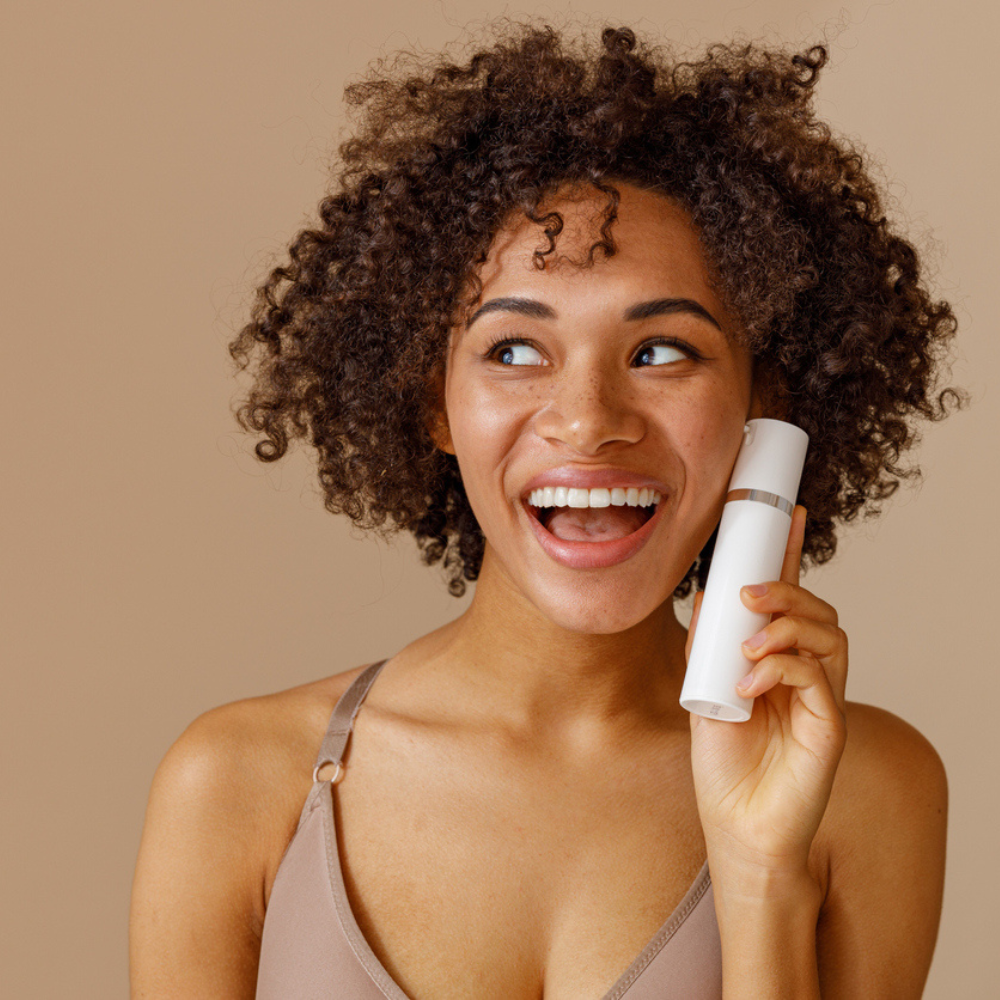Discovering the transformative power of glycolic acid spray can be a game-changer in your skincare routine. Known for its exfoliating properties and ability to promote a radiant complexion, glycolic acid spray offers a convenient and effective way to achieve smoother, more even-toned skin. Whether you’re a skincare novice or a seasoned enthusiast, incorporating this multitasking product into your daily regimen can help rejuvenate and revitalize your skin, leaving you with a glowing, refreshed appearance.
Glycolic acid, a type of alpha hydroxy acid (AHA), works by gently exfoliating the outer layer of skin, which helps to remove dead skin cells and unclog pores. This process not only smooths the skin’s texture but also promotes cell turnover, revealing fresher, younger-looking skin underneath. Additionally, glycolic acid has been found to stimulate collagen production, which can improve the elasticity and firmness of the skin over time. Its ability to enhance the absorption of other skincare products makes it a versatile addition to any beauty routine, amplifying the effectiveness of serums, moisturizers, and treatments that follow.
Check out the benefits of glycolic acid spray…
@aamnaadel How often to use glycolic acid for the best results ✨ #dermatologist #dermatologydoctor #skincareroutine #skintok #skincare #skincaretips #glycolicacid #hyperpigmentation #keratosispilaris #darkunderarms #ingrownhair #foryou #fyp #fypシ
Glycolic acid spray is embraced for the ton of benefits it provides, including:
- It stimulates collagen production, reducing the appearance of fine lines and wrinkles, and improving skin elasticity.
- Regular use can help fade dark spots, hyperpigmentation, and discoloration, resulting in a more radiant complexion.
- Its exfoliating properties help unclog pores, reduce breakouts, and diminish acne scars.
- Glycolic acid spray can help even out skin tone by reducing blotchiness and improving skin clarity.
- By removing the layer of dead skin cells, glycolic acid can enhance the absorption and efficacy of other skincare products.
- This spray can also help smooth the rough, bumpy skin associated with keratosis pilaris by exfoliating the affected areas.
- In hair care, glycolic acid can be used to exfoliate the scalp, removing buildup and promoting healthier hair growth.
Note: It is essential to use it as directed and start with lower concentrations to minimize the risk of irritation and sensitivity.
Can you use glycolic acid spray for the underarm?
@phenneybeauty The Ordinary Glycolic acid for underarms before and after #fypシ゚viral #glycolicacidasdeodorant #theordinaryglycolicacidtoner #lightenunderarms
TikTok has unlocked another layer of glycolic acid, this time for use as underarm sprays. So, why should you try it out?
- Glycolic acid can lighten dark spots and even out skin tone in the underarm area.
- It also helps remove dead skin cells, preventing clogged pores and ingrown hairs.
- By reducing the buildup of dead skin cells and bacteria, glycolic acid can help control underarm odor.
- Regular use of glycolic acid sprays can result in smoother skin texture, reducing the appearance of bumps and roughness.
How to use this spray for the underarm
If you’re considering using glycolic acid spray for your underarm area, consider the following:
- Start with clean, dry underarms. Wash the area with a gentle cleanser and pat dry.
- Spray a small amount of glycolic acid onto a cotton pad and gently swipe it over the underarm area. Avoid spraying directly onto the skin to prevent over-application.
- Start with applying the glycolic acid spray once or twice a week. Gradually increase the frequency as your skin builds tolerance. Daily use can be too harsh for some, so monitor your skin’s reaction periodically.
- Follow up with a gentle moisturizer to soothe the skin and prevent dryness.
- If your underarms are exposed to the sun, apply sunscreen to the area, as glycolic acid can increase sun sensitivity. This is also relevant if you’re wearing sleeveless outfits.
- Do not apply glycolic acid immediately after shaving or waxing to prevent irritation. Wait at least 24 hours.
- Watch for signs of irritation, such as redness, burning, or peeling. If these occur, reduce the frequency of use or discontinue altogether.
- Use a lower concentration of glycolic acid (5-7%) for underarm application to reduce the risk of irritation.
- If you have sensitive skin or any skin conditions, consult a dermatologist before incorporating glycolic acid spray into your underarm care routine. Consider glycolic acid sprays specifically formulated for sensitive areas or those that include soothing ingredients.
- Always perform a patch test before the first use to ensure your skin does not react negatively to the glycolic acid. Better safe than sorry.
Can you mix glycolic acid with other ingredients?
Mixing glycolic acid spray with other skincare products should be done with caution to avoid potential irritation or adverse reactions. For instance, using glycolic acid and retinoids together can increase the risk of irritation because both are potent exfoliants. Alternate their use; try glycolic acid one night and retinoids on another night. Other than retinoids, Vitamin C is also something to watch out for. Both glycolic acid and vitamin C are acidic and can cause irritation when used together. Use vitamin C in the morning and glycolic acid in the evening.
Other acids to tread carefully with when using glycolic acid are salicylic acid and lactic acid as combining multiple exfoliating acids can lead to over-exfoliation and skin sensitivity. Therefore, choose one type of acid for your routine, or alternate their use on different days.
Moisturizers help soothe the skin and restore moisture, making them a great follow-up after using glycolic acid. Hyaluronic acid is a hydrating ingredient that complements glycolic acid by preventing dryness and irritation. Niacinamide also reduces inflammation and strengthens the skin barrier, which can mitigate the irritation from glycolic acid.
Remember that glycolic acid spray can increase skin sensitivity to the sun, making daily sunscreen application crucial. Apply sunscreen every morning, especially if you use glycolic acid at night.
Finally, follow the proper layering order in your skincare routine–cleanse, apply glycolic acid (if using a toner or spray), then follow with serums, moisturizers, and sunscreen in the morning. Keeping to this careful method will help you safely incorporate glycolic acid spray into your skincare routine while minimizing the risk of irritation and maximizing the benefits.
Featured image: dima_sidelnikov/iStock
For the latest in fashion, lifestyle, and culture, follow us on Instagram @StyleRave_
—Read also
























































![Social Media Spring Cleaning [Infographic] Social Media Spring Cleaning [Infographic]](https://imgproxy.divecdn.com/9e7sW3TubFHM00yvXe5zvvbhAVriJiGqS8xmVFLPC6s/g:ce/rs:fit:770:435/Z3M6Ly9kaXZlc2l0ZS1zdG9yYWdlL2RpdmVpbWFnZS9zb2NpYWxfc3ByaW5nX2NsZWFuaW5nMi5wbmc=.webp)
![5 Ways to Improve Your LinkedIn Marketing Efforts in 2025 [Infographic] 5 Ways to Improve Your LinkedIn Marketing Efforts in 2025 [Infographic]](https://imgproxy.divecdn.com/Hv-m77iIkXSAtB3IEwA3XAuouMwkZApIeDGDnLy5Yhs/g:ce/rs:fit:770:435/Z3M6Ly9kaXZlc2l0ZS1zdG9yYWdlL2RpdmVpbWFnZS9saW5rZWRpbl9zdHJhdGVneV9pbmZvMi5wbmc=.webp)














